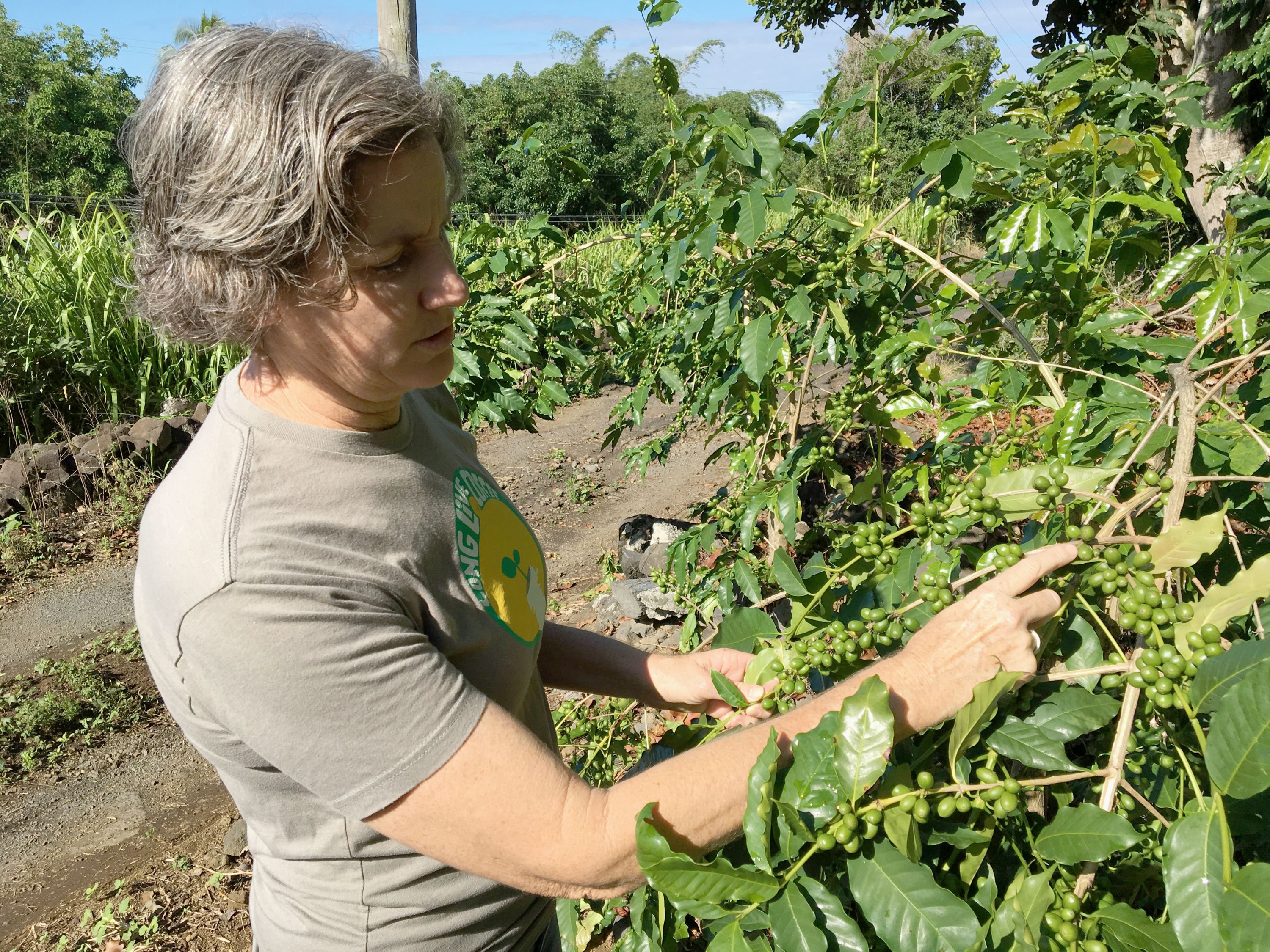Coffee Leaf Rust Arrives in Hawaii
Coffee leaf rust has come to Hawaii.
The damaging fungus was first tentatively identified on coffee plant samples collected on Maui two weeks ago and has also now been reported on the Hilo side of the Big Island. As of November 2, it hadn’t been confirmed in the coffee-growing area around Kona, which sits opposite Hilo on Hawaii.
“If it’s only on the Hilo side, we might have a shot at containing it or eradicating it,” said Suzanne Shriner, owner of Lion’s Gate Farms outside Kona and a member of the Western IPM Center advisory committee.
Coffee leaf rust is one of the most devastating pests of coffee plants and is established in all of the other major coffee growing areas of the world but had not previously been found in Hawaii.
“In bad years, it can defoliate up to 80 percent of the tree, which wipes out your harvest for that season and the next,” Shriner said. “It can also kill trees.”

The pathogen can be managed. Fungicides help control it, and good growing and sanitation practices also help. Regular pruning and training of the coffee tree helps prevent over-cropping and maintains a healthy field. These practices also improve air circulation and open up the canopy to allow proper fungicide spray coverage. Weed control keeps competition for vital nutrients low, thereby reducing the susceptibility to the rust.
“I don’t think it’s the end of the world,” said Shriner, one of the growers who helped develop a Pest Management Strategic Plan for coffee that identified all the pest threats to the industry. “Costs are going to go up significantly, because fungicides aren’t cheap, and there are going to be some challenges and bumps in the road for a while we get it figured out.”
That work has already begun. The federal minor-use pesticide program known as IR-4 was holding its annual priority-setting meeting as the discovery was announced and added identifying new fungicide products for Hawaiian coffee to its list of priority projects. Rust-resistant coffee varieties have also been developed and planted in other coffee-growing regions.
Coffee leaf rust, Hemileia vastatrix, was first discovered in Sri Lanka in 1869 and is now found in the major coffee-growing regions of the world, including Southeast Asia, Africa, and Central and South America.
Hawaii has strict importation rules requiring all imported green coffee beans for roasting and associated packing materials be fumigated prior to entering the state to ensure beans are free of pathogens and insect pests. These rules also subject coffee plants and propagative plant parts to a strict one-year quarantine if imported to Hawaii.
Those rules didn’t keep the disease off the islands, however, and Shriner doesn’t think there will be any way to know exactly how those fungal spores made the trip.
“A lot of green coffee comes into the state from other coffee-growing regions that have rust,” she said. “It could have come in on a bag. It could have come in on a tourist, or maybe with a worker who came from another coffee-growing region. It’s hard to know.”
And while Hawaii’s strict importation rules didn’t stop the disease from arriving, it did delay its arrival significantly, which is important in its own right.
“In a lot of ways we’re fortunate,” Shriner explained. “We’re stepping into the middle of the rust picture, and a lot of research is already under way. That’s a better position to be in than being the first area affected.”